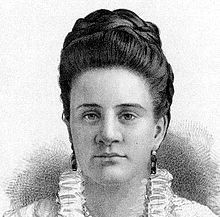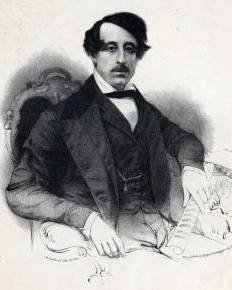Writing Women In: Ann Childe, and the year was 1825
When the Academy started in 1822, English society at large was shocked. While it was great to have a musical education college in the country, what on earth were they thinking, taking in girls and boys at the same time?! Imagine what would happen!
So the Academy, with its 1822 head on, created separate departments for female and male students. That should do it!
Except of course, teenagers will be teenagers, however, no matter what era, and in his memoirs, ex-student Lindley Nunn recalled the futility of it all: ‘It will hardly astonish my readers to learn that matrimonial alliances were the rule rather than the exception, brought together as the students were – meeting daily in the common Entrance Hall, at Rehearsals and Concerts, and not infrequently elsewhere (contrary to the rules, I am afraid).’ Singers Ann Childe (1811-1888) and Arthur Edward Seguin (known as Edward) (1809-1852) were a particularly well-known and successful example of this (despite having to overcome a particularly salacious episode of bad behaviour in Edward’s studentship). Both Ann and Edward were vocal stars of the Academy, probably the one thing that kept them in the Academy despite the afore-mentioned bad behaviour and, on Ann’s part, an apparent complete inability on the part of her family to pay the fees.
Arthur Edward Seguin
Ann, the eldest of three Childe sisters to enter the Academy, passed the audition for her studies as a singer in 1825, alongside Emily, who chose piano for her principal study. Within a year, Ann’s path was clear. She sang in almost every concert, often appearing as a soloist multiple times within the same event, as well as performing in ensembles and duos. The core of her repertoire seems to have been Italian opera, with composers such as Rossini, Cimarosa and Pacini being favourites, while the more ‘English’ rep such as Crotch and Handel being less frequent. By 1827 she was much in demand outside the Academy, not just through requests from Academy teachers for her appearance in their external concerts, but also through institutions such as the Philharmonic Society and Philanthropic Society. All of these requests had to go through the Academy’s Committee of Management, who acceded to every request, although interestingly, the Philanthropic Society’s approval was tempered with the statement that the Committee could not ‘approve of her singing the air assigned to her in the 1st part.’
The Committee’s willingness to allow such constant absence for external engagements was clearly a complicated mix of pride in having a student who was doing so well and a desire to recoup the fee debt that the Childe family were accruing for the two sisters. Ann and Emily’s father James Warren Childe was a painter whose income clearly did not stretch to the required * guineas per year, and the Committee minutes are full of accounts of letters and conversations with him, trying to gauge his ability to pay the fees and suggesting a timeline of payments. At no point was it suggested that the sisters should leave, a testament to their ability and to Ann’s growing fame.
A particularly tricky episode for Ann in the Academy’s history was around its complete break with ex-harp teacher and fraudster Charles-Nicholas Bochsa. I’ve written before about his complicated and rather fast-and-loose relationship with both music and the law that resulted in his dismissal from the Academy, so suffice here to recount his attempt to purloin Ann and other students for his opera company. His first approach to the committee for their services was above board; in 1829 he requested the ‘services of Miss Childe and Brizzi for 6 Italian operas to be given at the theatre at Brighton between 2nd and 22nd November, he having already engaged Miss Bellchambers and Mr E Seguin and Mr A Sapio for the said performances.’ Ann’s father was ‘particularly anxious’ for her to accept the engagement, probably because of the accompanying fee – Ann herself, however, seems to have been less enthusiastic. Indeed, she refused outright to sing the title role in Vaccai’s opera Giulietta et Romeo, and once it was discovered that the engagement was a cover for inveigling the students to leave the Academy altogether, all concerned gave up the whole idea with disgust, citing the ‘malicious and unprincipled designs of Mr Bochsa.’
In all these performances, both within and outside the Academy, it is notable just how many included the services of Edward Seguin as well, and eventually the inevitable happened. The impending nuptials are referred to rather coyly in the Committee minutes, when they advise Ann’s father that they can’t allow her performing fees to pay for sister Maria’s studies, as ‘Miss Ann Childe’s situation in life may very soon be altered whereby her father will not have any claim or control over her services.’ Ann and Edward married in 1832. They continued to perform together in concert, and From 1834 to 1836, she sang in the Italian opera season at the King's Theatre, Haymarket, continuing the repertoire that had earned her such good reviews as a student. Her eldest child Edward was born in 1837 – he too would become a singer – and the following year, on the invitation of American impresario John Lester Wallack, the family set sail for New York, where they would be based for the rest of their lives.
The couple debuted in America in The Barber of Seville in 1839, but it was not long before they founded their own opera company, the Seguin Troupe, which found success across North America. Anne’s obituary summed up this chapter of her life:
“In February 1839 Mrs Seguin made her debut here as Rosina in The Barber of Seville, with De Begnis as Figaro and Mr Seguin as the Doctor. Both Mr and Mrs Seguin were strongly identified with English opera here for many years, but their distinguishing success was achieved in the Bohemian Girl which was first brought out here in 1844 at the Park Theatre with Mrs Seguin as Arline and Mr Seguin as Devilshoof. The opera was beautifully put upon the stage, and the ballet in the first scene, since generally omitted, was made specially beautiful and attractive. It met with extraordinary success not only in New York but throughout the country generally. Mrs Seguin created a sensation that has bever been excelled in lyric art. She sang the part of the Gypsy more than 1,000 times. Mrs Seguin also sang in Amelia, La Sonnambula, Cinderella and various other operas, always achieving unparalleled success.”
This success lasted until Edward’s early death from tuberculosis in 1852. Anne immediately retired from the stage, although she remained active backstage and in her musical salon, as well as teaching. She was an American point of contact for many Academy ex-students who toured in the country – Anna Bishop was one old friend who was delighted to remake her acquaintance when she came to New York. Anne Childe died in 1888, leaving a fortune of over $100,000, survived only by one daughter and a grandson.
Song dedicated to Anne Childe


